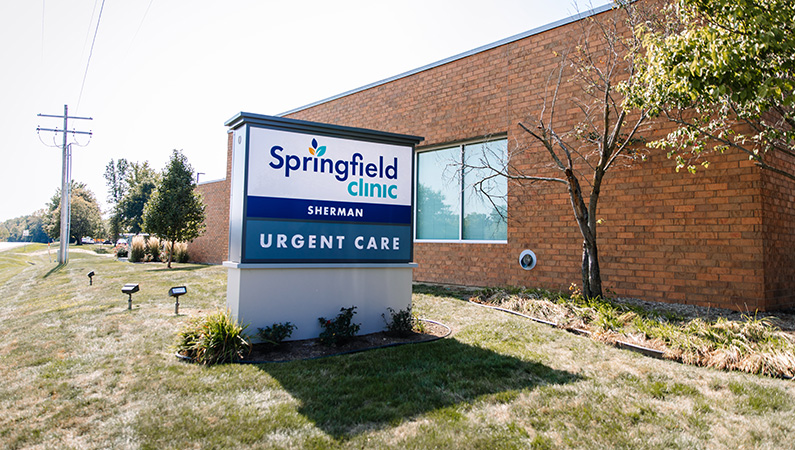The Value of Urgent Care Centers in Linking the Gap Between Main Treatment and Emergency Solutions
Immediate care centers have actually arised as an important component of the health care landscape, effectively addressing the critical demand for prompt clinical interest without resorting to emergency solutions. By providing take care of non-life-threatening conditions, these facilities help to relieve the burden on emergency clinic and boost client access to timely treatment. Their extended hours and diverse solutions satisfy an expanding populace looking for choices to conventional key treatment. Nevertheless, the evolving role of urgent treatment facilities elevates important questions about their combination within the more comprehensive medical care system and the ramifications for person end results and resource allowance.
Overview of Urgent Treatment Centers
Immediate care centers have become an important part of the health care distribution system, supplying available clinical services for non-life-threatening conditions. These facilities usually operate outdoors standard office hours, offering individuals an option to emergency clinic and medical care settings. Patients seeking immediate care frequently present with issues such as small injuries, infections, or ailments that require punctual attention but do not present an instant risk to life or limb.
Immediate treatment facilities are staffed by a series of healthcare experts, consisting of medical professionals, nurse practitioners, and doctor assistants, that are equipped to detect and deal with different clinical issues. They usually feature analysis tools such as X-ray makers and research laboratory services, allowing them to provide comprehensive treatment on-site.
The facility of urgent treatment facilities has actually been influenced by the raising demand for timely clinical solutions in a busy society, where clients may battle to protect visits with health care suppliers. Therefore, these facilities intend to ease blockage in emergency situation departments, boosting total medical care effectiveness. Furthermore, urgent care centers typically act as a bridge between health care and emergency situation services, making sure that people get appropriate care tailored to their specific clinical requirements.

Benefits of Urgent Treatment Services
Accessing timely treatment is a considerable advantage of urgent treatment solutions. These centers supply prompt attention for non-life-threatening conditions, successfully decreasing delay times compared to typical emergency divisions. People looking for look after small injuries, diseases, or immediate wellness concerns can acquire treatment without the long hold-ups frequently connected with medical facility sees.
Another trick advantage is the extended hours of procedure. Lots of urgent care centers are open nights and weekend breaks, accommodating people who might not have the ability to see their medical care provider throughout standard workplace hours. This versatility makes immediate treatment an obtainable alternative for those with active timetables or abrupt wellness concerns.
In addition, urgent treatment facilities typically offer a vast array of solutions, consisting of diagnostic testing, X-rays, and basic research laboratory services. This extensive technique enables quick diagnosis and treatment, enhancing patient contentment.
Furthermore, urgent care facilities are usually more economical than emergency situation spaces, making them an eye-catching option for individuals without insurance or those with high-deductible plans. Generally, immediate treatment services play a critical duty in providing easily accessible, timely, and budget friendly clinical care.
Contrast With Health Care
Commonly, people usually weigh their options in between urgent treatment centers and medical care service providers when seeking medical interest. Both serve necessary functions in the health care system, yet they vary considerably in range, availability, and cost.
Key treatment service providers are normally the first point of get in touch with for patients, concentrating on long-term wellness administration, preventative care, and chronic disease monitoring. They provide connection of care, cultivating a patient-provider connection that permits detailed health analyses and personalized treatment strategies. Arranging a consultation can be time-consuming, often calling for days or weeks in advancement. Urgent Care.
On the other hand, immediate treatment centers give instant care for non-life-threatening problems that need prompt attention, such as small injuries or infections. These facilities commonly operate outside of standard workplace hours, accommodating people that may not have the ability to visit their medical care service provider during regular service times. Furthermore, immediate treatment is generally extra affordable than emergency clinic check outs, making it an enticing option for those with limited health care gain access official statement to.
Inevitably, while urgent care centers and main treatment carriers both add to individual health and wellness, they deal with unique requirements, making it critical for patients to establish which choice best straightens with their circumstances.
Emergency Situation Services Communication
The interaction in between immediate treatment facilities and emergency situation solutions is a crucial aspect of the health care landscape, specifically when people face scenarios that might rise in extent. Immediate treatment facilities serve as a bridge between main treatment and emergency divisions, addressing non-life-threatening problems that call for immediate interest. This partnership enhances individual outcomes and maximizes source allowance within the medical care system.
When individuals provide with urgent yet not life-threatening issues, urgent treatment facilities can efficiently manage their needs, reducing congestion in emergency clinic. When a person's problem surpasses the extent of urgent care therapy, Facilities geared up with analysis capabilities can promote timely references to emergency situation solutions. This smooth interaction helps ensure that individuals get the proper level of care without unnecessary hold-ups.
Additionally, efficient interaction between immediate treatment suppliers and emergency services is important. Sharing individual details and treatment backgrounds fosters coordinated treatment, minimizing the danger of repetitive tests and procedures. As health care remains to progress, the dynamic relationship in between urgent treatment centers and emergency solutions will certainly play an essential role in boosting person treatment efficiency, complete satisfaction, and overall wellness end results within the area.
Future of Urgent Treatment Facilities
As healthcare demands develop, the future of immediate treatment facilities is poised to become progressively indispensable to the general clinical ecosystem (Urgent Care). These centers are likely to expand their roles by integrating innovative technologies, such as telemedicine, fabricated intelligence, click here for more info and electronic wellness record assimilation. This will boost client accessibility and enhance treatment sychronisation in between urgent treatment, medical care, and emergency situation services
Furthermore, urgent treatment centers are expected to diversify their solution offerings to consist of preventive care and persistent disease administration. This shift will position them as vital parts in managing population health, decreasing the concern on emergency situation divisions, and dealing with spaces in health care availability.
The expanding trend of value-based care will further increase the change of immediate treatment centers, triggering them to concentrate on person results and contentment. Facilities might additionally adopt joint method designs, working carefully with specialists and main treatment providers to ensure comprehensive person management.
Conclusion
In conclusion, immediate care centers serve an important function in the health care system by offering prompt access to treatment for non-life-threatening problems, successfully easing stress on emergency situation services. Their expanded hours and diverse array of services boost client benefit and satisfaction, while additionally making certain suitable care delivery. As health care needs proceed to evolve, the function of urgent treatment facilities will likely come to be progressively substantial, more linking the space between primary treatment and emergency situation services.
The facility of immediate care centers has actually been influenced by the increasing demand for prompt clinical services in a fast-paced culture, where patients might have a hard time to safeguard consultations with primary treatment service providers. Furthermore, immediate treatment facilities typically offer as a bridge in between key treatment and emergency solutions, ensuring that people obtain ideal treatment tailored to their specific medical needs.
Several immediate treatment facilities are open nights and weekend breaks, accommodating people that may not be able to see their key treatment provider during standard office hours (Urgent Care). As health care proceeds to evolve, the vibrant relationship in between urgent treatment centers and emergency services will play a crucial duty in improving person treatment effectiveness, fulfillment, and overall health and wellness results within the community
